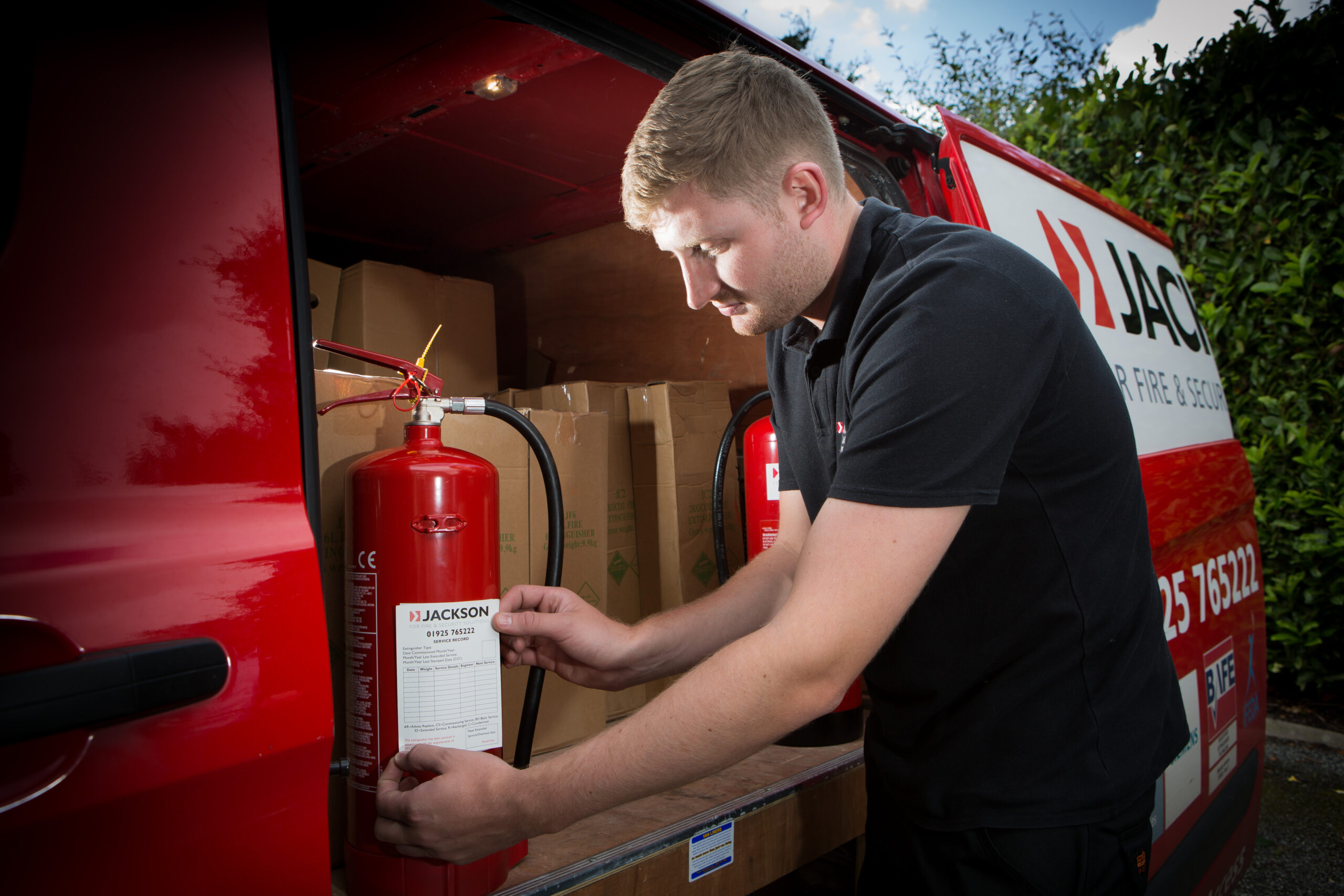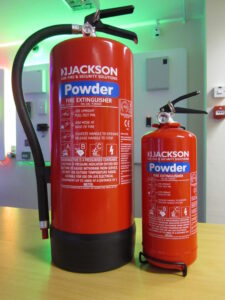Quite a few people seem unsure about powder fire extinguishers following some changes to advice a few years ago about their use. That change stemmed from an amendment to the standard BS 5306-8 aimed at addressing some concerns associated with them.
Knowing which fire extinguisher to use for what type of fire is something that can cause confusion. This article highlights the fact that four out of ten construction workers wouldn’t know which type of fire extinguisher to use on an electrical fire and that’s a sector you’d probably expect to be more knowledgeable than most on fire safety risks.
In particular, quite a few people seem unsure about powder fire extinguishers following some changes to advice a few years ago about their use. That change stemmed from an amendment to the standard BS 5306-8 aimed at addressing some concerns associated with them.
Dry powder fire extinguishers put fires out primarily by quickly interrupting the chemical reaction taking place and cutting off the oxygen supply. While there are different types of powder fire extinguishers available, the type most commonly used can extinguish Class A, B and C fires. Their high extinguishing capacity for their weight combined with their versatility made them popular for use in many settings. But over the years it became apparent there could be some problems resulting from their use.
What can powder fire extinguishers be used for?
For all the above reasons, powder fire extinguishers generally should not be used indoors, or in small spaces, unless specified as the most appropriate choice by a fire risk assessment. In some circumstances, having powder fire extinguishers that haven't been specified through a fire risk assessment could even end up invalidating your insurance.
But they do still have an important role to play in tackling certain types of fires. Powder fire extinguishers are best suited to businesses using chemical processes or where welding and flame cutting takes place. They can be used on garage forecourts and at premises with large, commercial boiler rooms. Specialist powder extinguishers are also available for use on flammable metals only. If you do have powder fire extinguishers in place in these circumstances, remember to provide training to make sure that employees know how to use the fire extinguishers safely and appropriately.
Jackson Fire and Security can advise you about which fire extinguishers you need in your premises, as well as carry out fire risk assessments and deliver ongoing fire extinguisher maintenance. If you would like to find out more, please get in touch with us.
-
Impaired visibility
-
Inhalation
-
Damage to property and the surrounding area

